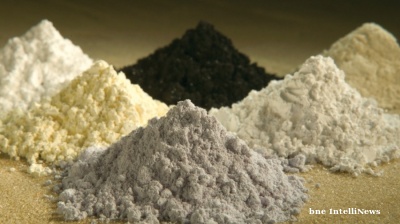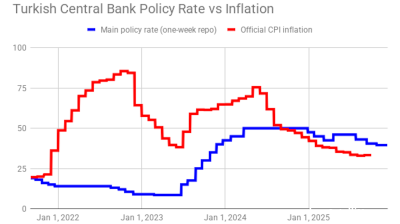The Turkish lira (TRY) market remains beyond any semblance of proper control since it nosedived to all-time lows on August 6 and 7. There are multiple quotes on the USD/TRY pair out there. The market is essentially broken as things stand.
The official market’s weekend break provided a much-needed pause for breath but there was no public sign from President Recep Tayyip Erdogan that he is aware of the true gravity of the situation. His finance minister, son-in-law Berat Albayrak, meanwhile, made no media interjections despite the tremors shaking the Turkish economy and markets. Is it simply a case of him being on vacation?
The central bank, in coordination with local lenders, has taken steps to tighten the lira but there is a question mark over whether its slow background steps can substantially curb the tensions that have stranded the local currency without the addition of a shock policy rate hike.
Moreover, there is even serious doubt as to whether a shock hike would retrieve the situation as the lira market is simply not functioning.
The situation looks precarious for Erdogan, but it should be noted that he still has options he could pursue before the endgame is upon him. The lira devaluation is a fact and it might well not stop here. But at least the soft currency is helping to curb Turkey’s stark current account deficit.
A bank run remains a threat. Locals could make a panicky dash to withdraw their hefty stash of deposited dollars—but Erdogan could easily order capital controls.
He will certainly go for policy rate hikes sooner or later, frankly or implicitly.
“Change in Turkey's CB key rate is a one-way street, until it isn't. Of the 60+ rate changes since 2005, 80% of decisions were a cut. When hikes came, they came big: cut, wait and see, take it easy, panic and boom,” Emre Akcakmak of EastCapital wrote on August 7 in a tweet (chart below).

Unless the dollar-lira rate exceeds 7.50 (by the early hours of August 10 it was trading in the mid-7.20s), Barclays expects Turkey’s central bank to “keep its policy rates stable and manage the volatility by moving within the corridor and reducing TRY liquidity in the system”, Bloomberg on August 9 quoted Ercan Erguzel of Barclays as saying in a note to clients.
Even if the central bank shifts to using its Late Liquidity Window to fund all lending at 11.25%, that “may not be sufficient enough to limit locals’ FX demand, ceteris paribus [other things being equal]”, he added.
Policy makers will likely raise the blended funding rates toward 11.25% while evaluating the effect of their measures over the next few days, Erguzel also wrote, adding that the central bank was set to continue to “intervene verbally if needed” until the next meeting of its monetary policy committee (MPC) on August 20.
The palace administration in Ankara has not given up its, somewhat desperate, efforts to find some fresh dollar infusions. A certain amount of hard currency will flow from Erdogan’s reliable financers, such as the European Bank of Reconstruction and Development (EBRD) and the World Bank’s International Finance Corporation (IFC). Other capital will arrive from low-baller, hot money hitmen depending on the magnitude of the devaluation and subsequent rate hike, while, unless the coronavirus situation spins out of control, Turkey’s international tourism market should make something of a recovery from this month, with a reasonable influx of dollar, pound sterling and euro-spending tourists, even if their numbers will not be comparable to those of recent years. A current account surplus could even occur.
“GBP/TRY is not far off 10 now. If you haven't taken a summer holiday, go visit in September and capitalise on low prices [take care of the virus]. Don't buy stocks or banks just yet, though. CBT [Central Bank of Turkey] will try and staunch the bloodloss here. I wish them luck. IMF dough comes with strings Weirdogan cannot stomach. Maybe the Qataris come to the rescue?” Julian Rimmer of Investec wrote on August 6 in a note to investors.
The worst thing for Erdogan is that we are at the end of Turkey’s latest loan growth cycle and it is credit that should serve as the main driver to carry Turkey’s presidential dictator through his closing strategy.

Baby food carries alarms at supermarkets in Erdogan's Turkey. It is also worth pondering how Turkish babies are dependent on imports and external financing of their economy.
Masses of ordinary Turks have lived amid the mire of economic distress for years now and the coming days will see more trouble materialise in their kitchens.
Assessing the likely timing and result of Erdogan’s endgame, likely to bring about Turkey’s ultimate collapse, can only be speculative at this stage. However, it can be said that a lot will depend on Erdogan’s usefulness to the global system.

Erdogan presenting an ornamental mirror to Angela Merkel. According to the Erdogan media, presenting a mirror to a woman means that "there is nothing more beautiful than you to give as a gift to you".
You may read in the mainstream media that Erdogan-led Turkey is creating more and more mischief in the eastern Mediterranean. This is becoming a perennial headline, but what does Erdogan actually do? Has he invaded Cyprus yet? Has he done anything much that is tangible besides issuing his volleys of menacing rhetoric?
But, when all is said and done, Erdogan is still a useful “subcontractor” with the second largest army in Nato. He’s not at all squeamish about his soldiers perishing, whether in Libya, Syria, Iraq or on other battlefronts, for it’s all for the greatness of the Turkish nation. It’s weak gruel—but that’s precisely why he’s so useful to some as an actor on the stage, a troublemaker who’ll drop into the picture on the flimsiest of pretexts.
On the implicit rate hikes side, the central bank’s weighted average cost of funding, excluding USD-TRY swaps with local lenders, rose to 8.06% on August 7, still lower than the 8.25% headline policy rate but suggesting a tightening from the 7%s.
The authority did not open its main funding channel, the one-week repo auction at 8.25%, on August 7, pushing lenders to the overnight window (9.75%) and the Borsa Istanbul repo market.
Rates on the BIST repo market, as a result, rose to 9.74% on August 7.
The central bank also has a late liquidity window at 11.25%.
The central bank is to also cut its targeted 3-month funding at 6.75% while it will halve funding to market makers at 7.25% as of August 10. These funding channels were brought in as part of the battle against COVID-19 shock.
There is also funding through USD-TRY swaps. The lira funding cost via one-year swaps was 1pp lower than the 8.25% policy rate and the 6-month swap cost was 1.25pp lower.
At the $1bn 6-month USD/TRY swap auction held on August 7, the implied lira rate rose to 10.1%, BloombergHT reported.
The central bank governor also asked lenders to stop their major pumping of loans into the economy—one week after the banking watchdog fined lenders that had fallen short of prescribed loan growth ratios (the so-called asset-ratio regulation).
After a meeting with central bank governor Murat Uysal late on August 6, bank executives came away with the impression that planned policy steps would lift backdoor rates to stabilise things, even if the lira remained volatile, six sources told Reuters on August 7.
At the three-hour meeting, which included regulators, the bank clearly said funding costs would be increased but did not give a number, said the sources familiar with the gathering.
Bankers predicted backdoor tools would be used to effectively tighten policy by up to 300 bp, and that there would be flexibility in asset-ratio requirements.
“After the steps taken the lira’s loss in value may continue for a while longer,” said one banker.
“New policy is EBRH - Everything But Rate Hikes,” Timothy Ash of Bluebay Asset Management wrote on August 7 in a note.
BloombergHT reported on August 7 that local lenders hiked TRY deposit rates to the 9-10.5% band from the 7%s averaged as of July 24. They have also pushed up USD deposit rates and Turkish lira mortgage loan rates.
Government-run Vakifbank is by now paying 2.25% for USD deposits.
We can say that the financial system is still under control, but the Turks are getting the jitters. August 7 saw queues in front of exchange offices and jewellery shops at Istanbul’s Grand Bazaar while rumours flared up that it was hard to find physical FX and gold countrywide despite jumps in spreads.

The Grand Bazaar on August 7 (@vardarr)
Investing.com showed the USD/TRY rate closing the week on August 7 at midnight at 7.29 while at Nadir Doviz, an exchange office at the Grand Bazaar, the figures up on the board were TRY7.41 for buying dollars and TRY7.45 for selling. In Ankara, the Altinkaynak jewellery shop closed the week with 7.35 and 7.46.
FX deposits at local lenders are also still on the rise but once the deposits are in they of course don’t amount to anything more than bank statements. If sizeable numbers head to the banks to demand their money back in cash, deposit holders may soon find themselves reading up on capital controls. A proportion of the rise in FX deposits also stems from the weakening of the USD versus the EUR and the rise in gold prices.
On August 3, Bloomberg published a story entitled “Five Signs That Argentines Are Losing Their Faith in the Peso”. Read the story with Argentina substituted for Turkey and peso for lira.
The forlorn attempts by the palace administration to attract some hot money flows, or to use the correct and polite market terms, to improve the depth of the currency market, might move one to pity.
In March 2019, Ankara entered a phase which has seen it attempting to spook foreign market players by taking steps to make it harder for them to invest in lira assets. That phase is now in tatters.
On August 8, Erdogan exempted non-resident financial institutions from paying the 1% Tobin Tax when buying lira, making the move with a presidential decree published in the Official Gazette.
It was immediate in effect.
Turks are still obliged to pay the 1% Tobin Tax if they buy FX or gold via the system.
“Serious fund managers will struggle to get a Turkish stock past the investment committee for the time being,” Rimmer wrote on August 7.
Just stocks or should we read “a Turkish asset”?
On Turkey’s international reserves front, it could be said that it is a known unknown at this moment. Speculation is rife. For instance, did the central bank’s FX cash dry up on August 6, at which point it could not immediately sell its FX-denominated securities?
Following August 7, when for the second day in a row the lira hit a record low against the dollar, government-run lenders returned to the USD/TRY market while Erdogan was live on TV. So the recovery in the official interbank USD/TRY rate was not due to the government’s slow, backdoor tightening of the lira.
On August 14, the Treasury will tap more dollars from local lenders in USD-denominated domestic papers with a 6-month coupon of 1.75%. It tapped $5.5bn from local banks in July via such papers.
Amid the lira swings, a sovereign eurobond issue looks rather unlikely, Global Capital reported on August 7 in a story entitled “Turkish lira madness keeps bond plans on ice”.
On August 7, the Borsa Istanbul derivatives market introduced new USD/TRY futures contracts. The central bank returned to that market in the last week of July after the state-run banks’ FX deficit rose towards $11bn as of July 30.
On the other hand, contagion concerns have been voiced for South Africa’s rand and the euro.
A “Turkey scenario,” in which loose monetary policy stokes both growth and high inflation, weighing on the currency, may become a greater risk in other emerging nations, especially if their reserves dwindle and debt levels rise, Bloomberg reported on August 4, quoting David Hauner of Bank of America in a story entitled “Emerging Markets May Be Heading for a Covid Fiscal Crisis 2.0”.
Goldman Sachs predicted a deeper depreciation for the Turkish currency and warned that “with August illiquidity ahead of us, risks of another discontinuous move in local assets are rising,” Bloomberg reported on August 9.
“Amid August illiquidity, a discontinuous move in the lira would still reverberate across EM HY markets as investors would likely worry about ‘the next domino to fall’ as a result of the COVID crisis,” it added.
Opinion

Don’t be fooled, Northern Cyprus’ new president is no opponent of Erdogan, says academic
Turkey’s powers-that-be said to have anticipated that Tufan Erhurman will pose no major threat.

COMMENT: Hungary’s investment slump shows signs of bottoming, but EU tensions still cast a long shadow
Hungary’s economy has fallen behind its Central European peers in recent years, and the root of this underperformance lies in a sharp and protracted collapse in investment. But a possible change of government next year could change things.

IMF: Global economic outlook shows modest change amid policy shifts and complex forces
Dialing down uncertainty, reducing vulnerabilities, and investing in innovation can help deliver durable economic gains.

COMMENT: China’s new export controls are narrower than first appears
A closer inspection suggests that the scope of China’s new controls on rare earths is narrower than many had initially feared. But they still give officials plenty of leverage over global supply chains, according to Capital Economics.




